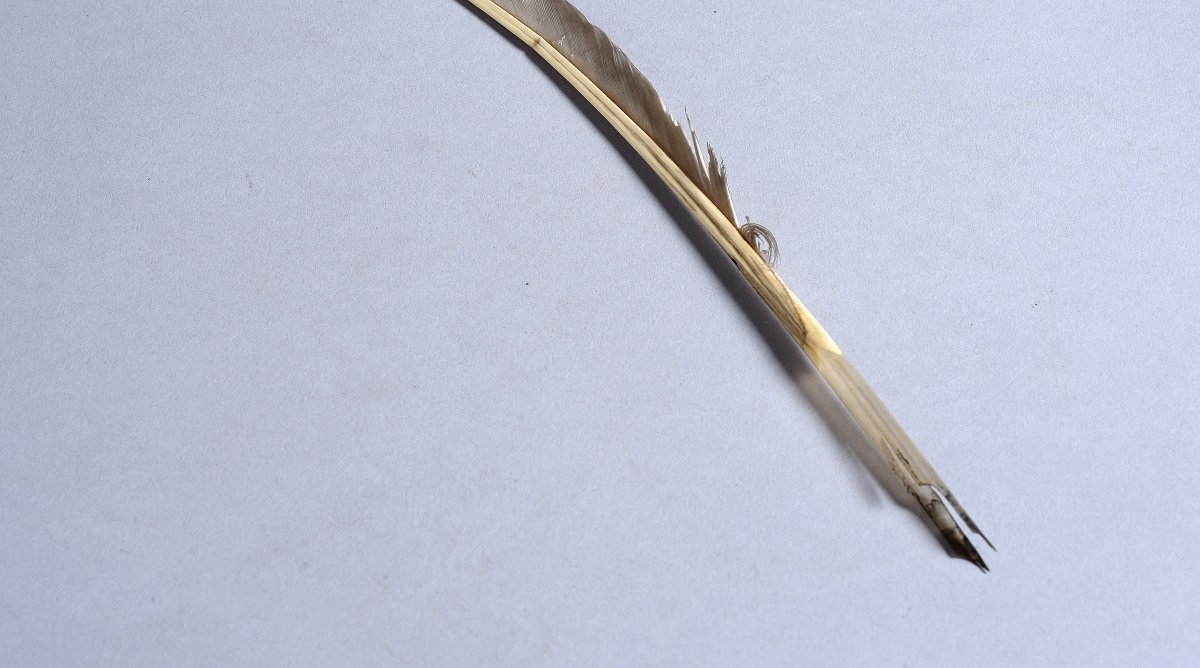Words by Helen Dorey
Some discoveries made during the restoration of the Office really bought into focus the working life of the pupils who worked here, six days a week, twelve hours a day.
The desk drawers in the Drawing Office had to be cleared in advance of the project. Used for many years as an extension of the Museum’s building archive, the drawers were full of items of interest and value to the Soane’s conservation, squirreled away by staff past and present.
From the very back of a drawer on the north side emerged three quill pens, tattered and ink stained – survivors of the countless thousands that must have been used in the Soane office.


